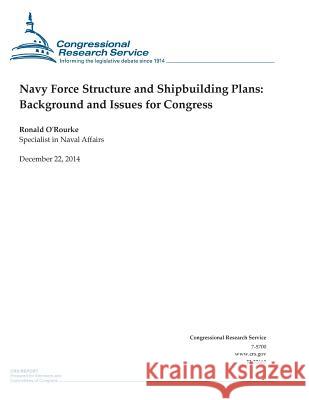Navy Force Structure and Shipbuilding Plans: Background and Issues for Congress » książka
Navy Force Structure and Shipbuilding Plans: Background and Issues for Congress
ISBN-13: 9781505903805 / Angielski / Miękka / 2014 / 70 str.
Navy Force Structure and Shipbuilding Plans: Background and Issues for Congress
ISBN-13: 9781505903805 / Angielski / Miękka / 2014 / 70 str.
(netto: 75,83 VAT: 5%)
Najniższa cena z 30 dni: 79,40
ok. 16-18 dni roboczych
Dostawa w 2026 r.
Darmowa dostawa!
The Navy's proposed FY2015 budget requests funding for the procurement of seven new battle force ships (i.e., ships that count against the Navy's goal for achieving and maintaining a fleet of 306 ships). The seven ships include two Virginia-class attack submarines, two DDG-51 class Aegis destroyers, and three Littoral Combat Ships (LCSs). The Navy's proposed FY2015-FY2019 five-year shipbuilding plan includes a total of 44 ships, compared to a total of 41 ships in the FY2014-FY2018 five-year shipbuilding plan. The planned size of the Navy, the rate of Navy ship procurement, and the prospective affordability of the Navy's shipbuilding plans have been matters of concern for the congressional defense committees for the past several years. The Navy's FY2015 30-year (FY2015-FY2044) shipbuilding plan, like many previous Navy 30-year shipbuilding plans, does not include enough ships to fully support all elements of the Navy's 306-ship goal over the entire 30-year period. In particular, the Navy projects that the fleet would experience a shortfall in amphibious ships from FY2015 through FY2017, a shortfall in small surface combatants from FY2015 through FY2027, and a shortfall in attack submarines from FY2025 through FY2034. The Navy delivered its narrative report on the FY2015 30-year shipbuilding plan to CRS on July 3, 2014. The Navy estimates in the report that the plan would cost an average of about $16.7 billion per year in constant FY2014 dollars to implement, including an average of about $15.7 billion per year during the first 10 years of the plan, an average of about $19.7 billion per year during the middle 10 years of the plan, and an average of about $14.6 billion per year during the final 10 years of the plan. A December 2014 Congressional Budget Office (CBO) report on the Navy's FY2015 30-year shipbuilding plan estimates that the plan will require about 13% more funding to implement than the Navy estimates, including about 6% more than the Navy estimates during the first 10 years of the plan, about 14% more than the Navy estimates during the middle 10 years of the plan, and about 20% more than the Navy estimates during the final 10 years of the plan. Over the years, CBO's estimates of the cost to implement the Navy's 30-year shipbuilding plan have generally been higher than the Navy's estimates. Some of the difference between CBO's estimates and the Navy's estimates, particularly in the latter years of the plan, is due to a difference between CBO and the Navy in how to treat inflation in Navy shipbuilding. The program that contributes the most to the difference between the CBO and Navy estimates of the cost of the 30-year plan is a future destroyer that appears in the latter years of the 30-year plan.
Zawartość książki może nie spełniać oczekiwań – reklamacje nie obejmują treści, która mogła nie być redakcyjnie ani merytorycznie opracowana.











